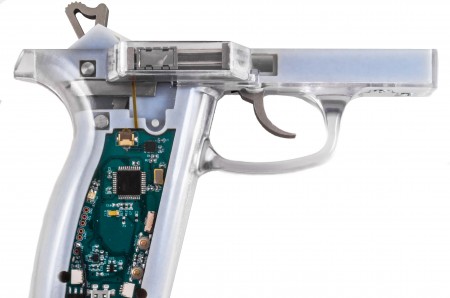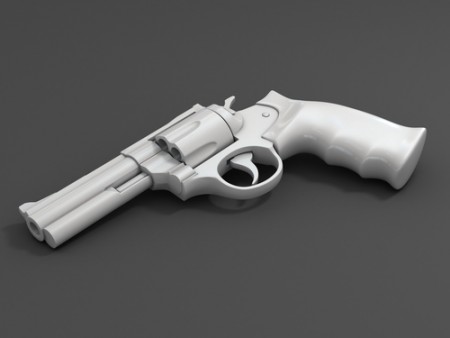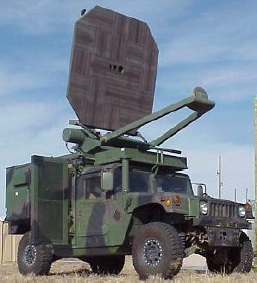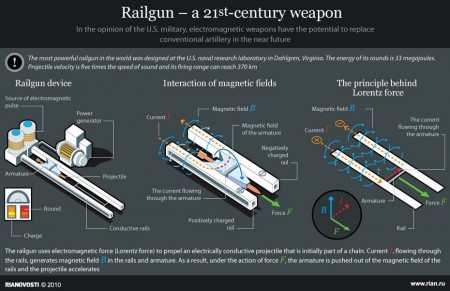July 16, 2016 – You may hate their very existence but firearms are very much a part of modern technical “civilization.” In fact the origin of weapons from spear points to arrow heads closely correlates with the increasing success of our species. So a topic focused on where firearms are headed in the 21st century is one worth tackling. Our guest blogger, Lauren Topor, has taken up the challenge. A full-time freelance writer and alumnae of Arizona State University, Lauren’s writing has appeared in a variety of publications from lifestyle magazines to business websites. You can follow Lauren on Twitter @laurentopor.
The sensitivity of this subject in light of recent police shootings of black Americans, and the gunning down of five policeman in Dallas, plus the American fascination with gun culture and their interpretation of the second amendment further makes a conservation on the evolution of firearms somewhat sensitive. Having never owned a gun and having never wanted to, it amazes that so many Americans cannot imagine not being without one.
I hope you enjoy Lauren’s contribution and as always welcome your comments here or on Facebook, Google+, Twitter and LinkedIn.
———-
Firearms manufacturing has come a long way since its inception. And the $400 billion industry shows no signs of slowing down any time soon states the Stockholm International Peace Research Institute in a recent report. Now more than ever before, civilians have access to advanced weaponry with high-tech features, like adjustable buffers, single-stage trigger systems, complex Rail Extension Systems and advanced grips. Take a look at some of today’s newest firearm technology and where it might lead to in the future.
3-D Printing
With 3-D printing technology, everyone from firearms enthusiasts to large-scale weapons manufacturers can print weaponry parts with the simple download of a schematic. After the parts are printed they can be assembled to complete the firearm, which includes models like the M16, AR-15 and AK-47. Making one of these weapons from start to finish takes just about five hours and costs much less than traditional retail sold firearms. While this type of three-dimensional printing is still fairly new, it’s growing rapidly and represents a disruptive change to the proliferation of firearms. [Editor’s Note: Back in August of 2012 in a 21st century tech headlines feature I wrote a piece called, Unintended Consequences of 3D Printing, featuring the first prototype gun produced using this technology.]
Smart Guns
Just like the iPhone in your pocket, there’s a firearm that requires a user’s precise fingerprint to operate. The technology, appropriately named smart gun, has been around since the early 1990s and was seen as a way to childproof handguns and rifles to keep them from the hands of those who should not be using them. Only recently, however, have smart guns started to sell in large numbers, particularly in the United States. The technology deploys one or more disabling features and is a permanent part of the weapon. Some smart guns can only be operated by a user wearing a ring, wristband or token. Some can be programmed for more than one user. One of the challenges of smart guns is the potential for electromagnetic interference to disable the security and safety features built into the weapon. There remains plenty of work still to be done to perfect these weapons as gun owners continue to voice concerns over reliability and safety.
Beam Weapons
Like 3-D printing, beam weapons sound more like they belong in a science fiction movie than in real life. They were first mentioned by Nikola Tesla in 1934 when he told a New York Times reporter about a death beam he was working on that could “bring down a fleet of 10,000 enemy airplanes at a distance of 250 miles.” For Tesla, the weapon he envisioned would have made war impossible because every country would have a defensive capability likened to an “invisible Chinese wall.”
Fast forward to the present and Raytheon’s Active Denial System (ADS), a vehicle mounted gun (see image below) that projects a high frequency focused beam of 95 GHz waves that when targeted on a person causes their skin temperature to become extremely uncomfortable in a matter of seconds. ADS was deployed in Afghanistan and is currently used by the United States Marines.
Boeing is also experimenting with beam wepaons. It has tested a 10 Kilowatt, solid-state laser system it calls the High Energy Laser Mobile Demonstrator for the United States Army and an airborne version of it called the YAL-1 Airborne Laser Testbed which it mounted inside a modified 747-400F. The former is designed to incinerate incoming shells and rockets. The latter would destroy tactical ballistic missiles.
Joining Boeing and Raytheon is Lockheed Martin with its HEL weapon system designed to defend locations from short-range artillery and rocket threats.
Railguns
In 2014 the United States Navy started developing a new weapon, the electromagnetic railgun launcher. These weapons launch a shell at speeds of 6,000 kilometers (3,730 miles) per hour. The system uses Hendrik Antoon Lorentz’ discovery that an electric force on a charged particle parallels the local electric field. The magnetic force lies perpendicular to the direction of the particles motion. A high-powered million-amp electric current provided by the ships engines creates the energy to drive a shell along a set of parallel rails achieving speeds equivalent to Mach 5 (five times the speed of sound). The United States Army is looking to create a similar weapon.












